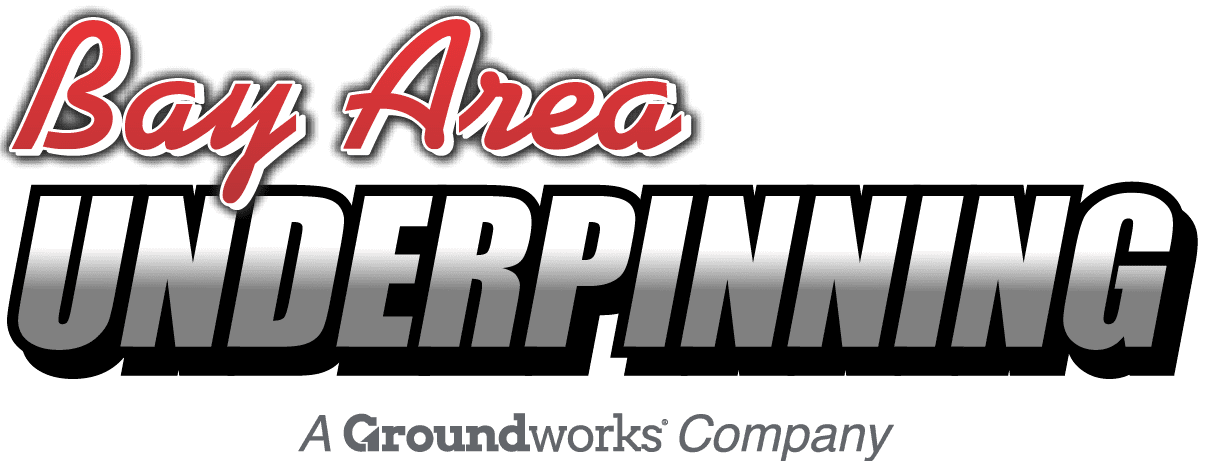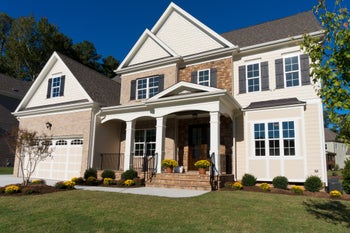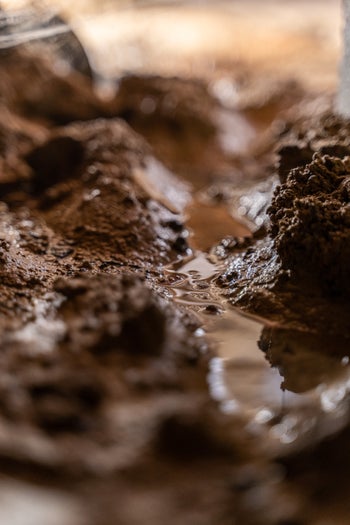How to Repair 3 Common Foundation Types in California
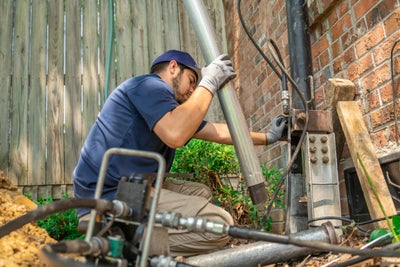
When foundation damage shows up, it puts your entire home at risk. This makes foundation repair one of the most valuable investments you can make for your home.
On this page, we’ll outline modern foundation repair techniques for each of the foundation types we service. After that, we’ll talk about the reasons for damage that are common to all of them.
How to Fix These 3 Common Foundation Types
Foundation repairs are possible for nearly any type of foundation. In California, the most common foundations are crawl spaces, pier and beam, and concrete slabs. Each foundation type has specific tools that work best to repair it. In this section, we’ll outline the best foundation repair methods for each of the four main foundation types.
1. Foundation Repair for Concrete Slabs
Homes with a concrete slab (also called a “slab-on-grade”) are best repaired with foundation piers. Most professional repair companies, including Bay Area Underpinning, can install three types of foundation piers—push piers, helical piers, and slab piers. While they all accomplish the same goal, there are some differences between the three:
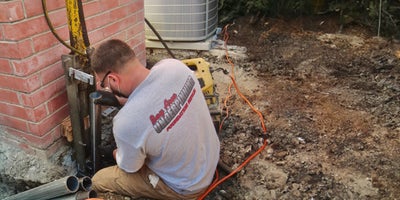
- Push piers: straight design, work for most situations, attach to the foundation footing, and then extend deep beneath the ground into bedrock.
- Helical piers: “screw-like” design, mostly used for lighter structures, hydraulically twisted into the ground and then into bedrock to bolster the foundation.
- Slab piers: usually used for homes with little yard space or for damage that isn’t easy to reach from the outside, placed directly underneath the concrete.
Each pier system will redistribute the weight of your foundation and keep your home stable for years to come.
2. Foundation Repair for Pier and Beams
A pier and beam foundation, also known as a post and beam or crawl space foundation, is elevated above ground level, creating a small amount of space underneath the house. Bay Area Underpinning’s approach to pier and beam foundation repair includes the following tools:
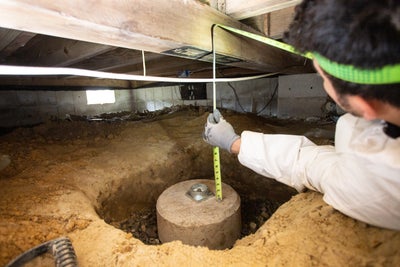
- Support Jacks: Crawl space support jacks provide the most robust and long-lasting support. Our team measures the space under your home and adjusts the jacks to fit accordingly, offering long-lasting stability.
- Sonotubes: Acting as hollow concrete columns, sonotubes are strategically placed around the pier and beam foundation. Our process involves removing the broken or old pier and beam footing and replacing it with a strong concrete form that can hold about 3,000 pounds per square foot.
- Shoring: This minimally invasive method adds extra support to worn foundations by attaching new beams, joists, and piers.
Pier and beams often suffer from issues like rotting wood, so all of these repair options work to provide your home with lasting support that won’t rot away over time!
3. Foundation Repair for Crawl Spaces

For homes with a crawl space foundation, the best repair option is a crawl space support jack system. These steel support beams attach to the floor joists in your crawl space, strengthening the entire structure.
Most crawl space jacks can be adjusted to match the size of your crawl space. Since they make your crawl space stronger, they also help prevent foundation damage (such as sagging floors) from forming later on.
What Causes Foundation Damage?
Foundation issue can arise for several reasons. Here are five of the most common causes foundation damage we see in the field every day.
1. Excess Water
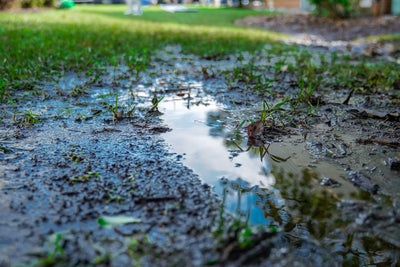
In California, foundation issues often arise from water damage due to the state’s variable climate, including leaks, heavy seasonal rains, flash floods, and landslides. This excess water weakens structures as it accumulates around foundations, allowing moisture to seep into cracks.
In colder California regions, this moisture can freeze and expand, worsening the cracks. Over time, this process can significantly damage foundations, especially after wet winters or sudden downpours common in the state.
2. Expansive Soil
California is known for its expansive soil, particularly in areas like the Central Valley. This type of soil swells when it absorbs water and shrinks upon drying, applying pressure on foundations and causing movement, cracking, or buckling. Homes in California built on expansive soil require special repair tools to prevent damage due to the soil’s shifting nature, which is exacerbated by our state’s dry summers and wet winters.
3. Tree Roots

In California, tree roots can cause considerable foundation damage as they search for water in the state’s often dry conditions. They may push against a foundation or remove moisture from the soil underneath, leading to ground shift and foundation cracks. In urban and suburban areas, it’s particularly important to plant large trees at a safe distance from homes to mitigate this risk.
4. Poorly Constructed Foundation
Improper foundation construction using substandard materials or incorrect building techniques can lead to inadequate support. These issues are particularly acute in earthquake-prone areas, where a strong foundation is crucial. Defects can result in uneven settling, cracks, and severe structural problems, especially after earthquakes.
5. Bad Drainage

Proper drainage is crucial for maintaining foundational strength in California, where sudden heavy rains can follow long periods of drought. Without adequate drainage, water can pool around the foundation, leading to erosion, soil instability, and increased pressure on the foundation walls. Ensuring that your gutters, downspouts, and landscaping effectively channel water away from the foundation is essential to prevent damage.
How to Prevent Foundation Damage
Watch this video from our friends at Groundworks for 12 foundation repair tips. Some basic steps you can take are:
- Install Proper Drainage: Implement appropriate grading, gutters, and downspouts to direct water away from the foundation.
- Regular Soil Maintenance: Manage moisture levels in the soil surrounding the foundation.
- Routine Inspections: Conduct periodic inspections with help from a professional to identify issues before they get worse.
FAQs
It’s critical to treat any foundation concerns as urgent matters needing immediate attention. Small cracks can be an indication of more significant structural problems. If you notice any discrepancies at home, reach out to Bay Area Underpinning for a free inspection and repair quote.
The duration of pier and beam foundation repair varies based on damage severity and repair methods. Minor repairs might take a few days, while extensive repairs could take weeks. Projects involving additional piers or complete foundation replacement may take longer.
The cost is determined by several factors, including the level of damage and the repair solutions implemented. For a precise quote, get in touch with Bay Area Underpinning. We offer free inspections and estimates, straightforward pricing, and various financing options.
Schedule a Free Foundation Inspection With Bay Area Underpinning

If you have concerns about foundation damage, don’t hesitate to contact Bay Area Underpinning. We’ve been helping homeowners in California with foundation repair since 2005, and we’re ready to do the same for you.
With industry-leading solutions and an experienced team, we’re committed to taking care of your home. Don’t let foundation damage ruin the safety and comfort of your home—schedule a free inspection with us today!
Related Resources
Publish Date:
Last Modified Date:
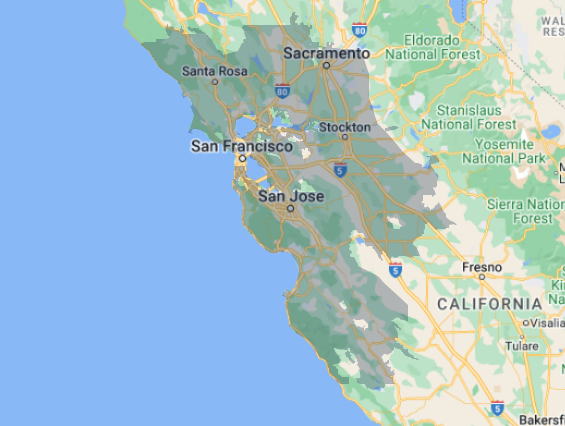
Our Locations
2333 Courage Dr. Suite C
Fairfield, CA 94533
1161 N Fair Oaks Ave
Sunnyvale, CA 94089
